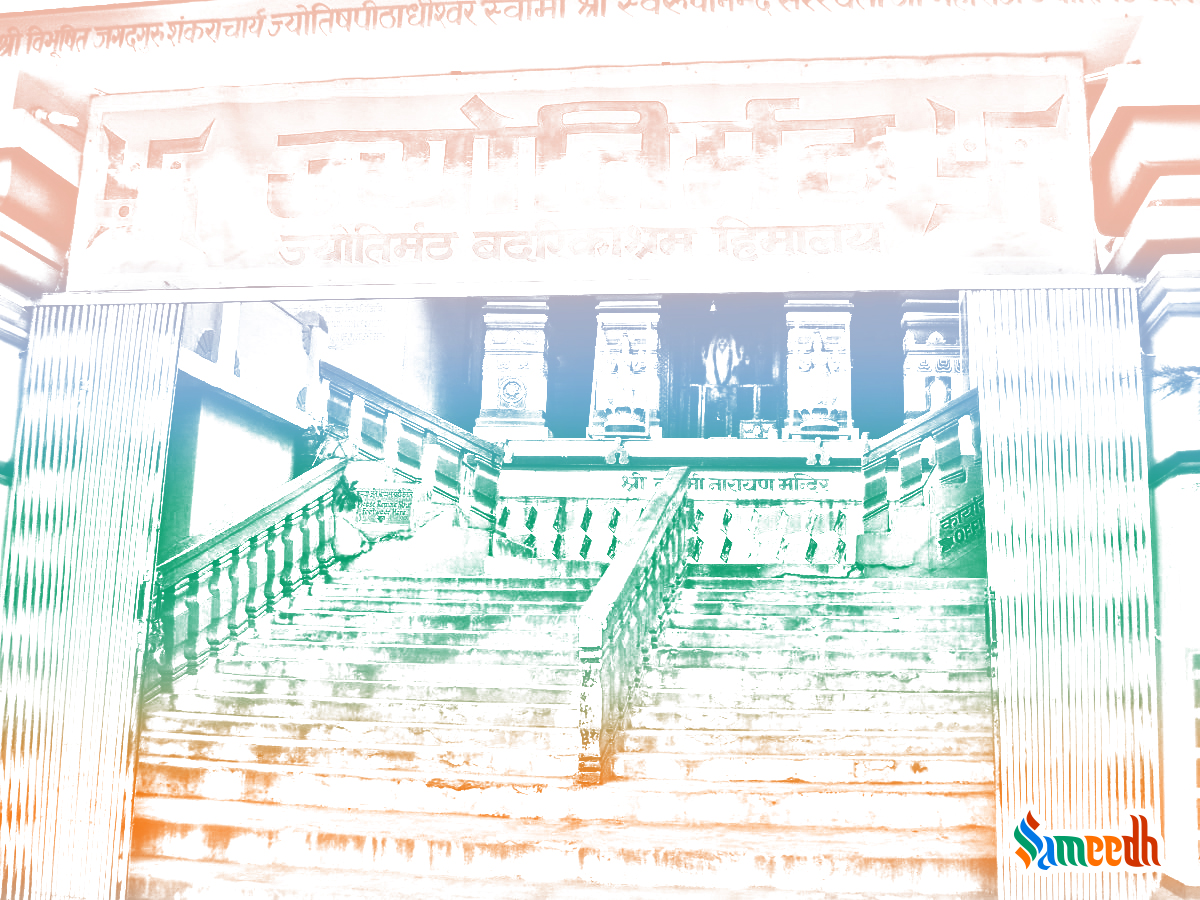This blogpost discusses the spiritual and religious importance of Jyotirmath.

LOCATION
At gates of Himalayan Pilgrimage Spots
Jyotirmath or Joshimath is located in the beautiful and difficult terrain of the state of Uttarakhand. The location of Jyotirmath and the heavenly atmosphere made it the perfect place for being chosen as one of the four monasteries established by Adi Shankaracharya. This location of Jyotirmath holds a special place in the hearts of devotees because of the mythology associated with the place. The place also makes it a perfect spot for all the tourists who wish to enjoy the terrain and the beauty of the Himalayas by trekking and other adventure based activities. The clean and cool atmosphere of Jyotirmath makes it a perfect spot for devotees and nature enthusiasts alike.
MYTHOLOGY
A hub of Advaita Vedanta
One of the most important reasons behind the gain in prominence of the place, Jyotirmath lies in the fact that Jyotirmath was chosen as one of the four special places to establish the one of the four monasteries which would teach the philosophy of Advaita Vedanta or Non-Dualism. It was established as a hub of teachings of Sanatan Dharma and Advaita Vedanta in 820 CE by Adi Shankaracharya. It is called the Uttaramnaya Matha or the monastery in the northern direction.
As directed by Adi Shankaracharya, this monastery of Jothirmath was assigned the Atharva Veda. Apart from being the chosen place of propagation of Advaita Vedanta, the importance of Jyotirmath lies in its geography and the temples it houses. One of the most important temples that are present in the town is the Narasimha temple. It was created to pray the Lord Narsimha, a reincarnation of Lord Vishnu. Another important temple was the Vasudeva Temple which was also built to pray the Lord Vasudeva, an incarnation of Lord Vishnu. These two temples make Jyotirmath a special and important place to worship Lord Vishnu.
SIGNIFICANCE
One of the four monasteries of Adi Shankaracharya
During the 7th century, the place Jyotirmath was under the reign of the Katyuri Dynasty. It was during this period the place became an important hub of spirituality and worship of Lord Vishnu. During this time, Adi Shankaracharya also became involved in creating a perfect place for understanding the concept of existence and god. He made this place perfect for understanding and propagating the wisdom of Atharva Veda. Adi Shankaracharya, aside from establishing the monastery at Jyotirmath also established the Narsimha Temple which is celebrated and revered by the devotees till date.
ARCHITECTURE
The abode of Lord Vishnu
With the two most popular temples of Lord Vishnu located in Jyotirmath, the place is one of the most pious and beautiful homes of Lord Vishnu. As the name suggests it is believed that Jyotirmath became a place where Lord Vishnu arrives every year and is visited by devotees across the world to worship the Lord Vishnu.
Jyotirmath, from Kartikeypura to a popular pilgrimage town
By becoming an important place in the kingdom of Katyuri Dynasty, Jyotirmath was always the important spiritual place it was destined to become. The establishment of one of the four monasteries at Jyotirmath by Adi Shankaracharya made it a spot for eternal reverence by devotees.
To know more about such places, read the blog posts on Sameedh.
